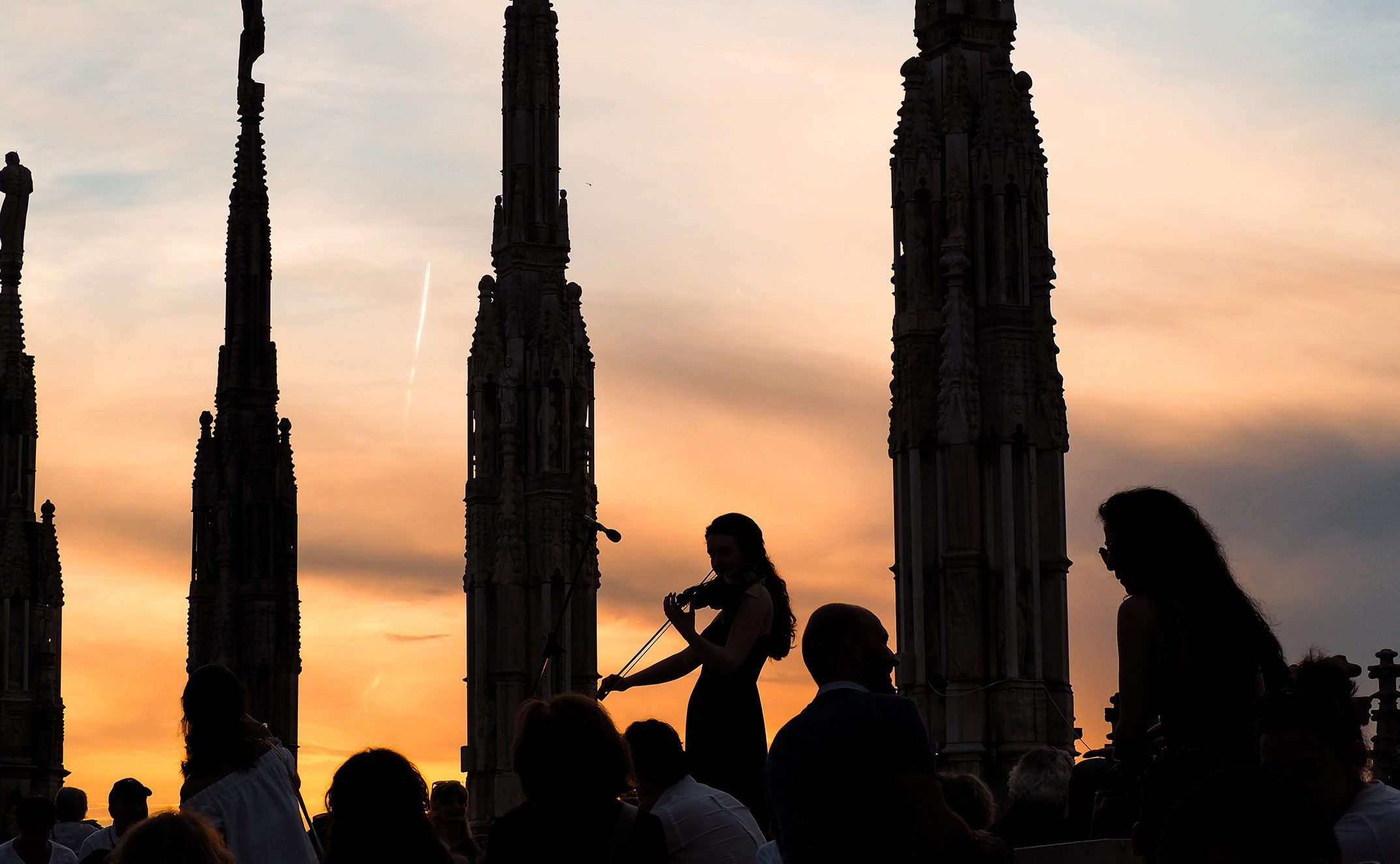The Cathedral
Work for the construction of Milan cathedral began in 1386 when the style of Gothic cathedrals had reached its peak. It was decided that the new church should be built in the area of the ancient basilicas of Santa Maria Maggiore and Santa Tecla, the remains of which, together with those of the Baptistery of San Giovanni alle Fonti, are still visible in the Archaeological Area.
For this purpose, in October 1387 the Veneranda Fabbrica del Duomo was founded at the instigation of Gian Galeazzo Visconti, Lord of Milan, with the aim of continuing with the design and construction of the church. Gian Galeazzo’s decision to use Candoglia marble instead of the traditional Lombard brick was accompanied by a real revolution in style through the choice of Gothic, which forced the Fabbrica to look for engineers, architects, sculptors and stone-cutters from all around Europe. The construction site became a lively space for the exchange of the most diverse ideas, experiences and skills from workers coming from all over the continent, which made the Duomo a crossroads of peoples and cultures and the most European among Gothic cathedrals.
The long succession of architects and engineers at the head of this innovative and original construction site makes it impossible to trace a certain authorship of the project.
Construction began from the apse, with its awe-inspiring and imposing stained-glass windows, and continued towards the transept and the first spans of the naves, leaving the age-old problem of closing the vault unresolved.
On 16 October 1418 Pope Martin V, who was returning from the Council of Constance, consecrated the church’s high altar.
At the end of the fifteenth century the greatest architects and artists of the time, including Leonardo da Vinci, tried to accomplish the difficult task of designing the tiburium. Once this phase was concluded and a unanimous decision was reached, construction work continued and a new phase started under the inspiration of the pastoral work of Carlo Borromeo.
The Council of Trent’s decrees (1545-1563) started the Counter-Reformation (more precisely, the Catholic Reformation) in opposition to the Protestant one. Carlo Borromeo, archbishop of Milan from 1564 to 1584 and Federigo Borromeo’s (archbishop from 1595 to 1631) interventions in the cathedral were inspired by the concepts and forms of the architecture and ecclesiastical furnishings of papal Rome, leaving a new imprint in the Duomo’s interior, as we can see from the magnificent architectural framework of the presbytery, the side altars, the crypt, the baptistery, the floor. The Quadroni di San Carlo and the wooden choir are among the most interesting examples testifying to the creativity of this prolific historical phase.
The design of the church’s façade began at the end of the sixteenth century, when the foundations for its prospetto (front) were laid, meanwhile the ancient façade of the church of Santa Maria Maggiore (which was demolished in 1683) had been rebuilt forward of its original position. As was the case for many other architectural elements of the cathedral, the façade too had to wait for long (until the end of the eighteenth century) before a definitive plan was completed.
Between the seventeenth and eighteenth century the tiburium was completed with the great spire on top and the laying of the statue of the Madonnina (1774).
The nineteenth century saw great activity on the construction site. On the eve of Napoleon’s coronation as King of Italy and on his initiative, new works were undertaken to complete the façade (1807-1813). The construction and decoration works continued, most of the spires were placed on the roof and several stained glass windows with enamel-painted glass were also completed.
The twentieth century, which was marked by war and conflict, saw the start of major renovation works, the first archaeological excavations in Piazza del Duomo and the completion of the façade with the addition of the doors, which date back to a relatively recent period, between 1909 and 1965.
In the second half of the 20th century, the Fabbrica undertook the complete, structural and conservative restoration of some complex parts of the Duomo. The sixties and seventies saw the Veneranda Fabbrica engaged in works on the façade, with the second restoration carried out on the spire after another one that had been carried out in 1840.
Inside the cathedral, the complex static restoration of the tiburium pillars was certainly one of the most complex interventions, while at the end of the century the apse and the façade were restored. Later, the Great Spire was restored for the third time. In 2016, the exciting challenge of restoring the tiburium and the dome began.


